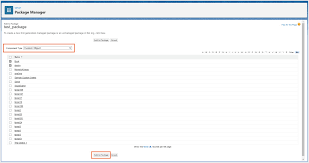How to Deploy Metadata to Salesforce Orgs: A Step-by-Step Guide
Deploying metadata effectively is critical for building Salesforce orgs that align with your business goals. However, deployment processes often hit roadblocks due to missed dependencies, overwritten changes, or failed deployments at the end of development cycles. Deploy Metadata to Salesforce Orgs.
As your team grows and business requirements become more complex, finding a deployment solution that works for everyone may feel overwhelming. While Salesforce’s clicks-not-code philosophy simplifies development, deployments can create bottlenecks if your process isn’t robust. Whether you’re working with custom objects, Flows, or Apex code, this guide will help you streamline your metadata deployments for the whole team.
Understanding Salesforce Metadata Deployment Options
Salesforce offers several methods for deploying metadata, most of which leverage the Metadata API. This API facilitates metadata transfers between Salesforce orgs or between orgs and version control systems like Git.
Although most metadata types are supported by the API, a few exceptions exist. Fortunately, these unsupported types are rarely critical, ensuring the API remains a dependable foundation for most deployment needs.
Change Sets: The Starting Point
Salesforce’s change sets are often the default tool for new users. These provide a clicks-not-code approach and are easy to enable within the Salesforce UI. However, their limitations can hinder long-term scalability and DevOps maturity.
Using Change Sets
- Create an outbound change set in the source org and upload it to the target org (e.g., sandbox or production).
- Deploy the change set as an inbound change set in the target org.
- Ensure system permissions are enabled for the user managing the deployment.
Limitations of Change Sets
- Manual and Time-Consuming: Dependencies must be added manually, and rebuilding change sets from scratch is often required for additional environments.
- Limited Visibility: Change sets lack insight into target orgs, which increases the risk of overwriting changes or creating conflicts.
- Not DevOps Ready: Change sets don’t integrate with version control, making them unsuitable for teams adopting DevOps practices.
For teams seeking a scalable deployment solution, change sets often fall short.
DevOps Center: Salesforce’s Modern Alternative
Salesforce’s DevOps Center offers an improved approach to metadata deployments, especially for teams adopting collaborative and source-driven development workflows.
Benefits of DevOps Center
- Work Items: Changes are grouped into “work items” that move through the pipeline without needing to recreate deployment packages.
- Version Control Integration: Supports Git-based workflows, enabling source-driven development and improved tracking of changes.
- Click-Based Interface: Accessible to both low-code and pro-code team members.
Limitations of DevOps Center
- No Metadata Comparisons: Teams must manually ensure changes are synchronized across environments.
- Lacks CI/CD Features: DevOps Center doesn’t support automated testing, rollbacks, or backups, requiring third-party tools for advanced DevOps processes.
While DevOps Center is a significant improvement over change sets, it may not fully meet the needs of growing teams striving for DevOps maturity.
Salesforce CLI: A Developer-Focused Tool
For teams with development expertise, Salesforce’s Command Line Interface (CLI) enables metadata deployments through scripting. As part of Salesforce DX, the CLI facilitates package-based development and automation.
Key Advantages
- Flexible and fast deployment process.
- Ideal for experienced developers building automated workflows.
Challenges
- Not user-friendly for admins or low-code team members.
- Requires significant time and effort to develop and maintain processes.
- Mixed tools can increase the risk of deployment conflicts and a lack of centralized audit trails.
Gearset: A Complete Metadata Deployment Solution
For teams seeking a streamlined, all-in-one deployment solution, Gearset provides the ideal balance of simplicity, collaboration, and DevOps maturity.
Why Choose Gearset?
- Comprehensive Visibility: See all metadata differences between environments, with a user-friendly interface for managing deployments.
- Precision Deployments: Cherry-pick specific metadata components or XML lines, and automatically resolve common deployment errors.
- CI/CD Support: Build automated pipelines with version control, testing, rollback, and backup capabilities.
- Ease of Use: Accessible to admins and developers alike, with no need for complex command-line tools.
How to Deploy Metadata with Gearset: Step-by-Step
- Select Source and Target Orgs:
- Choose environments (e.g., Salesforce orgs, Git branches) for deployment.
- Use the Comparison Filter to retrieve relevant metadata.
- Choose Metadata to Deploy:
- Compare environments side-by-side to identify changes.
- Select metadata items and dependencies for deployment.
- Run Problem Analysis:
- Gearset automatically detects and fixes issues that could cause deployment failures.
- Deploy or Schedule:
- Validate deployments in advance and schedule releases at convenient times.
- Receive notifications confirming successful deployments.
Deploy with Confidence
Whether you’re working with simple change sets or advanced DevOps processes, the right tools can transform your Salesforce deployments.
Gearset ensures seamless, reliable metadata transfers with a 99% deployment success rate—empowering teams to focus on innovation rather than troubleshooting.
Ready to simplify your metadata deployments? Start your free trial of Gearset today and experience hassle-free releases!
🔔🔔 Follow us on LinkedIn 🔔🔔













